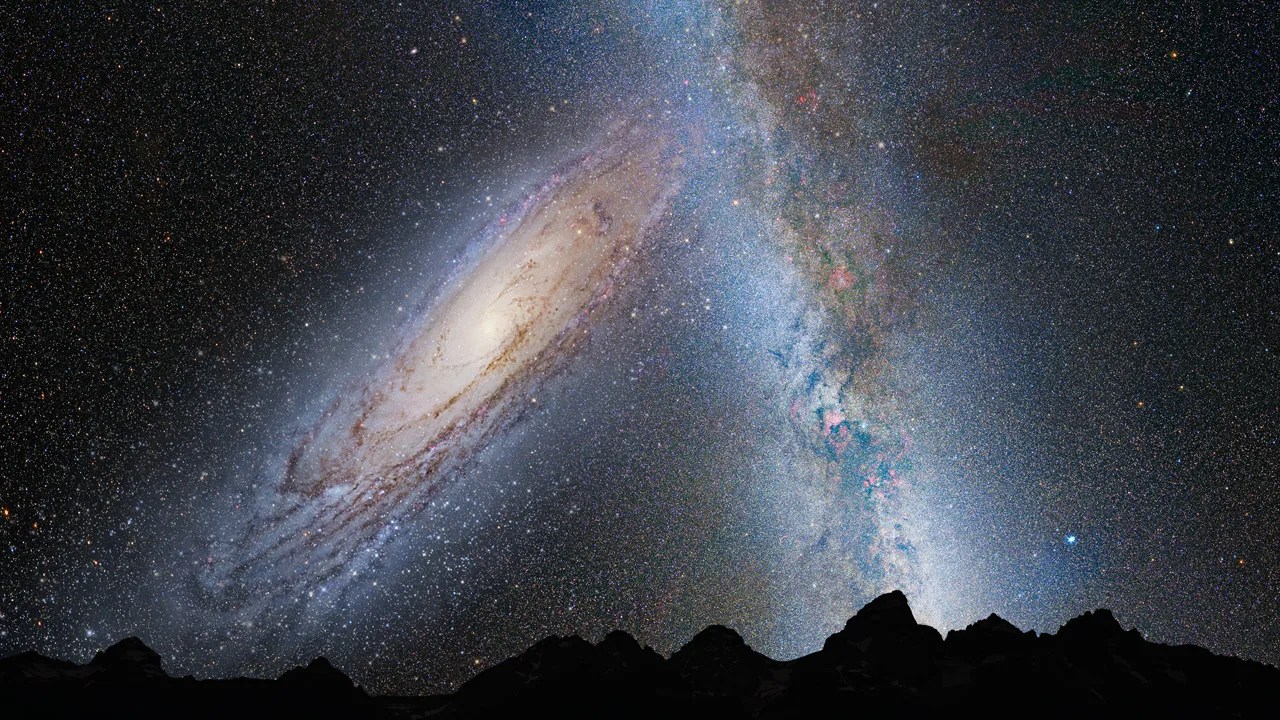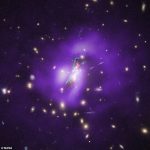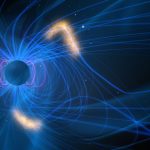Key Takeaways:
- The Andromeda Galaxy and the Milky Way are on a collision course, but this won’t occur for billions of years.
- Hypervelocity stars (HVSs), among the fastest objects in our galaxy, may have already begun migrating between Andromeda and the Milky Way.
- Stars, though seemingly stationary, actually move, with exceptions such as hypervelocity stars, which travel at velocities around 1,000 km per second.
- Gravitational interactions between binary stars and black holes are believed to be responsible for the high velocities of HVSs.
- Meticulous analyses and simulations suggest that a small percentage of HVSs from Andromeda could migrate to the Milky Way, potentially detectable based on their velocity and trajectories.
It’s often remarked upon the fascinating fact that the Andromeda Galaxy, that faint, fuzzy blob just beyond the corner of the Square of Pegasus, is on a collision course with our own Milky Way galaxy! However, it’s crucial to emphasize that this cosmic event won’t occur for several billion years. Yet, recent research indicates that we may already be witnessing hypervelocity stars that have been expelled from Andromeda. This suggests that the exchange of stars between the two galaxies might have already commenced, even before their anticipated merger.
We commonly perceive stars as fixed entities in the sky, apart from their gradual westward movement as a result of the Earth’s rotation. However, the truth is quite different—stars do indeed move, but the vast distances of interstellar space make their motion largely imperceptible. There are exceptions, such as Barnard’s star in the Ophiuchus constellation. This inconspicuous red dwarf star moves approximately 10.39 seconds of arc annually (for comparison, the full Moon measures 1,900 seconds of arc in diameter).

Another intriguing category of stars is hypervelocity stars (HVSs), which rank among the fastest objects in our galaxy. These stars are defined as having velocities on the order of 1,000 km per second—far exceeding the Earth’s velocity through space, which is around 30 km per second! The first HVS was discovered in 2005, and since then, several more have been identified, with some having the potential to escape from the Milky Way altogether.
Typically, the motion of stars results from their orbits around the galactic center. For instance, our own Sun takes approximately 220 million years to complete one orbit around the center of the Milky Way. The high velocities of HVSs are believed to originate from gravitational interactions between binary stars and black holes. This concept was proposed by Jack Gilbert Hills, a stellar dynamicist born on May 15, 1943. In this process, one star of a binary system is captured by a black hole while the other is ejected at high velocity. Other theories include the ejection of one star from a binary system due to a supernova explosion or as a result of galactic interactions.
To comprehend the interactions between the Milky Way and the Andromeda Galaxy, a team led by Lukas Gülzow from the Institute for Astrophysics in Germany conducted meticulous analyses. This involved understanding the relative motion of the two galaxies, modeling the gravitational potential of the entire system, and generating simulations of stellar motion to depict the trajectories of HVSs.
The study calculated the trajectories of 18 million HVSs for two different scenarios—one assuming equal mass for both galaxies and the other with the Milky Way having about half the mass of Andromeda. The initial positions of the HVSs in the simulation were randomly generated around the center of Andromeda, with random ejection directions. The results revealed that approximately 0.013% and 0.011% of HVSs are currently within a radius of 50 kpc around the Milky Way center.
The study also examined the velocity of HVSs upon arrival, considering both galaxy mass simulations. It was found that many HVSs retain their initial velocity, but due to the duration of their journey, a significant proportion may evolve off the main sequence during their migration. Some HVSs decelerate enough to be captured by the Milky Way.
The team compared the simulated positions of stars against high-velocity star positions from Gaia data (Release 3) and found consistency between the simulated position distribution and the Gaia data. The study concludes that it is highly probable for HVSs from Andromeda to migrate to the Milky Way. While they are not expected to arrive in large numbers, they are anticipated to distribute evenly around the Milky Way center. Detecting them based on stellar velocity and trajectories may even be feasible, but further studies are needed to take that next step.


